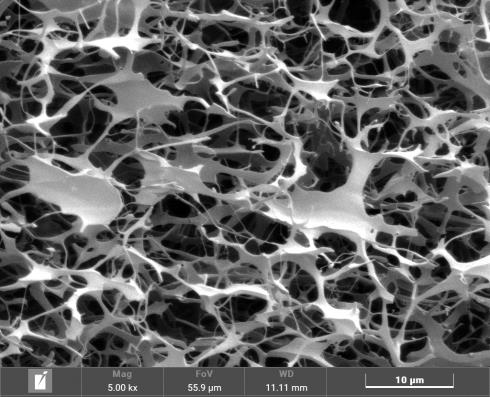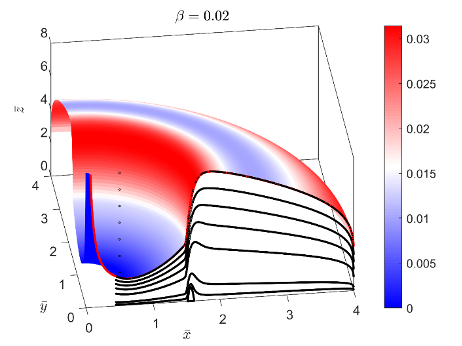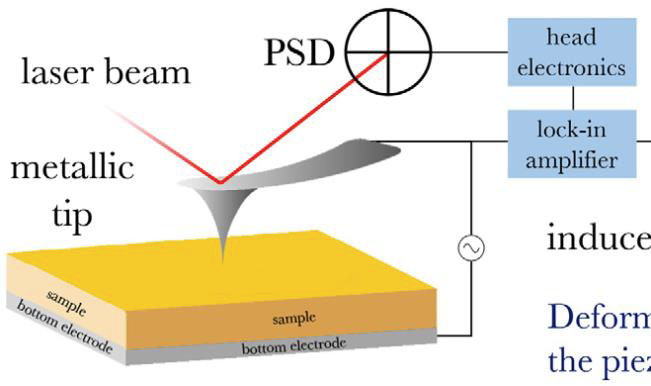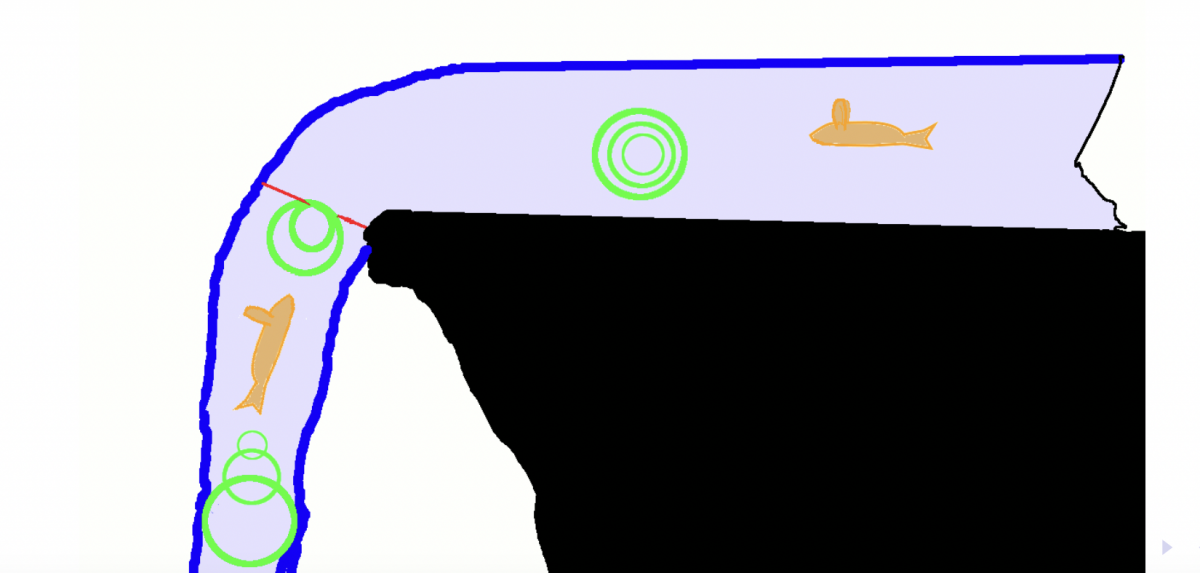Non-Newtonian fluids are widely used in a variety of research areas as well as numerous industrial applications, including the food, pharmaceutical, and petroleum industries. As rheologists, the internal structures of these complex fluids are of significant interest as it allows us to analyze and understand better the obtained results of rheological experiments. To understand the industrial processes, there are several model fluids that are used to study and optimize these processes. Moreover, it is important to understand how these fluids respond when their composition changes due to the addition of nanoparticles, so that their rheological behavior can be improved. In this sense, the visualization of the fluid microstucture and how it relates to rheology can provide important information. Cryo-Scanning Electron Microscopy (cryo-SEM) is a one reasonable means for observing and investigating the microstructure of complex fluids. Using this method, we show the microstructure of some fluids and nanofluids, and relate these microstructures to the rheology and to flow behavior. We present some promising implementation cases of this cryo-SEM approach for various non-Newtonian fluids.
Archives : Évènements
Soutenance de thèse de Maxime Lang (Équipe TriboLub)
Soutenance de Thèse de Baptiste Couderc (Équipe TriboLub)
Soutenance de Thèse de Nicolas Elie (Équipe TriboLub)
THESE Présentée par : Nicolas ELIE
Directeur de thèse : Noël BRUNETIÈRE (Institut Pprime)
Co-encadrant de thèse : Pascal JOLLY (Institut Pprime)
Co-directeur de thèse : Romain LUCAS-ROPER (IRCER)
JURY :
K. DELBE, Maitre de conférence HdR, ENI Tarbes Rapporteur
N. FILLOT, Professeur, INSA Lyon, Rapporteur
N. BRUNETIERE, Directeur de recherche, CNRS
J. CAYER BARRIOZ, Directrice de recherche, École Centrale de Lyon
P. JOLLY, Ingénieur de recherche, Université de Poitiers
R. LUCAS-ROPER, Professeur, Université de Limoges
Le rôle réciproque des forces de gravité et de rotation pour le ressaut circulaire hydraulique
Nous examinons l’écoulement d’un jet vertical impactant sur un disque horizontal tournant. Nous identifions deux régimes basés sur le niveau de rotation. Pour un disque stationnaire ou de faible vitesse de rotation, un ressaut hydraulique se forme (figure a). A de plus grandes vitesses de rotation le ressaut se transforme en une bosse (figure b). Une approche basée sur la théorie des films minces est employée pour analyser la dynamique de l’écoulement dans différentes régions du domaine. Les effets de gravité et de rotation sont examinés en développant un modèle théorique capable de capturer le ressaut continu et la structure tourbillonnaire. La théorie est validée pour les deux régimes de ressaut et bosse contre des données expérimentales existantes. Dans le régime de ressaut, l’écoulement transitionne d’une région proche du disque à composante azimutale pour la majeur partie vers une région proche de la surface libre et avec une composante majoritairement radiale. Dans le régime de bosse, l’écoulement maintient un caractère azimutal autour de la bosse. L’intensité tourbillonnaire associée au ressaut diminue avec l’augmentation de la vitesse rotationnelle, reflétant l’occurrence d’un ressaut de type 0 jump sur le disque tournant. A de faible niveau de gravité, le tourbillon ne se forme pas sous le ressaut. Pour des niveaux faibles de rotation, fortes de gravité et grand disque, un ressaut hydraulique se forme proche du jet, suivi d’un épaississement poussé proche du bord du disque. Finalement, nous discuterons du traitement du ressaut hydraulique en présence de la stratification de la densité et gravité variable.
Combustion instabilities and amplification mechanisms via global linear analysis
Thermoacoustic instabilities arise in combustion devices from the interaction of an unsteady heat release rate with acoustic waves. The feedback loop is closed by convected fluctuations, such as vortices, swirl or equivalence ratio fluctuations. Thermoacoustic instabilities impair the development of low-emission technologies such as lean combustion or H2-based fuels. Global linear methods — global stability, resolvent analysis, structural sensitivity — provide valuable tools for a monolithic approach to comprehensively investigating the flame-flow system. These methods pinpoint unstable phenomena and amplification mechanisms without the need for hybrid models.
This presentation will give an overview of the use of these methods for combustion-like cold flows and reactive flows, as well as perspectives for future developments.
RIVAGES, un réseau de recherche sur les risques côtiers en Nouvelle-Aquitaine
Le Réseau Régional de Recherche (R3) RIVAGES (« Risques et Vulnérabilité pour l’Adaptation et la Gestion du littoral en Nouvelle-Aquitaine ») est un réseau dédié à la dynamique physique et aux enjeux sociétaux des littoraux de Nouvelle-Aquitaine face aux perturbations naturelles et anthropiques.Il associe des compétences dans plusieurs disciplines, allant des sciences de la terre et l’océanographie physique aux sciences humaines et sociales. Le réseau propose une vision complète de ce qu’est le littoral, grâce à des recherches sur la diversité de systèmes qui le composent : plages, estuaires, zones humides.RIVAGES est financé par la Région Nouvelle-Aquitaine, porté par l’Université de Bordeaux et administré par l’OASU (Observatoire Aquitain des Sciences de l’Univers). Une première phase, dite « d’amorçage », a permis au réseau, grâce à des réunions et à des journées de travail, de se structurer, de réunir ses partenaires et de définir ses objectifs. Depuis mars 2023, le R3 RIVAGES est entré dans sa phase opérationnelle. Ses objectifs sont de favoriser les échanges entre la Recherche et la société civile en facilitant la remontée des attentes et des besoins des partenaires (acteurs, gestionnaires et utilisateurs des littoraux néo-aquitains) vers les scientifiques. Ces interactions ont pour but de favoriser la co-construction de projets de recherche et ainsi fournir des éléments d’aide à la décision politique.RIVAGES œuvre également pour le développement de son réseau de partenaires et de chercheurs, et vise à communiquer et valoriser ses actions vers un public varié.
Le réseau organise notamment des journées scientifiques, des réunions et des rencontres entre les communautés de partenaires et les chercheurs pour échanger sur les thématiques du risque littoral. Il participe ou co-organise des évènementiels pour le partage des connaissances sur ces thématiques.
Couplage entre convection naturelle et rayonnement en milieux gazeux semi-transparents
Les écoulements de convection naturelle dans des gaz participant au rayonnement infrarouge (absorbants et émettants) sont le siège de couplages complexes qui influencent les régimes d’écoulement. Quelques études de cas typiques seront présentées dans des configurations impliquant des cavités différentiellement chauffées, des panaches thermiques ou des sources de chaleur ponctuelles.
Probing the local piezoelectric behavior and ferroelectric domains switching by near field microscopy
Controlling electric polarization of ferroelectric materials via an applied electric field is widely used in electronic devices. To scale the size of this latter a local control of the polarization is mandatory as well as the stability of well-defined polarized state in distinct submicron and nano-scaled regions of the materials. Scanning probe microscopy using a biased tip allows to study both. Thus, non-volatile behavior as well as the low frequency dynamic of the local polarization can be study for future application in ultrahigh information and/or piezoelectric actuators devices. In this frame, the Piezoelectric Force Microscopy (PFM) will be presented to show advantages and drawbacks of the technic. Afterward, results obtained on several different structures will be addressed depending on the time. To show the versatility of the PFM technic, very different organic and inorganic materials are proposed:
o Lead Zirconate Titanate commercial materials have been characterized for a comparative study with macroscopic piezoelectric coefficient toward a quantitative PFM;
o Nanoscale switching dynamics of ferroelectric domain and domain growth studies are addressed in granular PZT thin film for grain-pinning effect and reversal velocity detection;
o PVDF & composite micrometric film have been studied to show the robustness of their piezoelectric coefficient after metallic inclusions; a mechanical stretching PFM combined study has also been done to demonstrate the possible enhancement of the piezoelectric phase of the PVDF.
Analogue gravitational field of nonlinear fluid dynamics and the cosmic shock-wave censor
After a brief review of the motivation and scope of analogue gravity, and of the cosmiccensorship hypothesis, I introduce an analogue of spacetime singularity in Bose-Einstein condensates, in the form of a shock wave stemming from the nonlinearity of the condensate fluid.It will then be shown that the nakedness of the shock singularity is dressed by the analoguetrans-Planckian physics of the ultracold gas, thereby providing a cosmic censor to forbid effective spacetime nakedness in the BEC.






